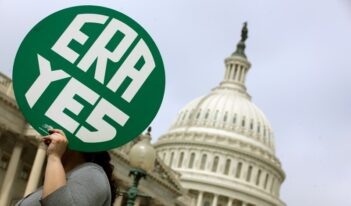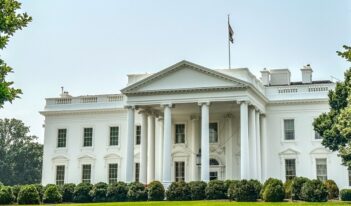
In overruling a key barrier to states taxing Internet sales, the Court raises questions for future litigation.
More than fifty years ago, in 1967, before there was an Internet, the U.S. Supreme Court held that the states could not impose on out-of-state mail-order sellers the obligation to collect and remit sales taxes for sales made to customers in states where those sellers had no stores, warehouses, or other physical presence. In striking down an Illinois law that imposed collection obligations on such remote sellers, the Court held that both the dormant Commerce Clause and the Due Process Clause prohibit the states from taxing remote sellers without a physical presence within the state.
A quarter century later, in 1992, the Court had a chance to reconsider its earlier ruling in a case called Quill v. North Dakota. The Quill Court reiterated its earlier conclusion that a physical presence is required to impose a sales tax collection-and-remittance obligation on out-of-state sellers. But the Court based its conclusion solely on the Commerce Clause, explicitly inviting Congress—which has the power under the Constitution to regulate interstate commerce—to intervene and to write the rules for how and under what circumstances states can tax remote sellers.
In the 26 years since, Congress has not taken any action, in spite of the sharp growth in e-commerce. Last month, though, the Supreme Court issued its opinion in South Dakota v. Wayfair and eliminated the physical presence requirement, thereby opening the door for states to impose sales tax collection-and-remittance obligations on remote sellers.
Wayfair is not so much the end of the story as it is the opening of a new chapter in the long-running saga of state efforts to collect sales taxes on goods purchased from out-of-state sellers.
Pressure had been building against the physical presence rule from two sources: states needing revenue, and traditional brick-and-mortar sellers who, because they had to collect and remit sales tax, complained they were put at an unfair disadvantage compared to remote sellers. In 1992, remote sales totaled about $180 billion, with an estimated sales tax shortfall—aggregate uncollected tax obligations—of between $0.5 and $3.3 billion. Only about 2 percent of households had Internet access when Quill was decided.
By 2017, e-commerce sales totaled more than $450 billion, with total remote sales in excess of $500 billion. The sales tax shortfall had grown to between $8 billion and $33 billion, and more than 85 percent of households had Internet access.
In response to a call in 2015 by Justice Anthony M. Kennedy for the Supreme Court to reconsider Quill, South Dakota enacted a law that directly challenged the Court’s physical presence test. The South Dakota law required an out-of-state seller without a physical presence in South Dakota to collect and remit sales taxes to South Dakota customers if the seller annually sold more than $100,000 of goods and services into South Dakota or engaged in 200 or more transactions within the state.
Wayfair lacked a physical presence in South Dakota, but its sales satisfied the statutory amount. Still, it refused to collect the tax. South Dakota sought a declaratory judgment in state court, while Wayfair sought summary judgment relying on the Supreme Court’s earlier decision in Quill. The South Dakota trial court granted Wayfair’s motion, and the state’s highest court affirmed. South Dakota then asked the Supreme Court to hear the case, which the Court agreed to do.
In a 5-4 opinion written by Justice Kennedy and joined by Justices Clarence Thomas, Ruth Bader Ginsburg, Samuel Alito, and Neil Gorsuch, the Court overturned its earlier precedents and rejected the physical presence requirement. The Court explicitly reversed its earlier decisions, which it said had been wrongly decided. The Court said that the physical presence rule creates cross-border “distortions” because it discourages out-of-state sellers from having an in-state physical presence and encourages customers to buy from out-of-state vendors.
Furthermore, according to the majority, the physical presence rule is also “arbitrary” and “formalistic,” which runs counter to the Court’s preference for a more nuanced approach that is responsive to the facts. In response to remote sellers’ arguments that they had made investments in reliance of not having to collect and remit sales taxes, the majority rejected those arguments because the sellers’ reliance was predicated on the customers not paying use tax, which they are required to pay but rarely do.
Writing in dissent, Chief Justice John Roberts—joined by Justices Stephen Breyer, Sonia Sotomayor, and Elena Kagan—agreed with the majority that the Court’s earlier decisions imposing a physical presence test were “wrongly decided,” but argued that the Court still should have adhered to precedent because Congress could override the Court’s earlier decisions. The Chief Justice was also concerned with the potentially heavy compliance costs that remote sellers would face because they will now have to deal with the shifting and disparate tax regimes of 50 states and numerous localities.
Ultimately, although the Court overruled Quill by confirming that physical presence was not a constitutional prerequisite to imposing a sales tax collection-and-remittance obligation on remote sellers, the Court did not clearly articulate what nexus a business must have with a state before it bears obligations for collecting sales taxes for that state. The Court approved the South Dakota law at issue as “clearly sufficient” to establish the required nexus, but questions remain about how low the threshold can go before a business cannot be obligated to collect sales taxes. The Court said only that a sufficient nexus arises when the collector “‘avails itself of the substantial privilege of carrying on business’ in that jurisdiction.”
The Court’s lack of clarity is problematic because the majority opinion in Wayfair confirmed that there remains a difference between the nexus needed to satisfy the Due Process Clause versus the nexus needed under dormant Commerce Clause analysis. Based on prior precedents, the dormant Commerce Clause nexus threshold is higher; no one knows, though, exactly how much higher.
Sending the case back to the South Dakota courts for further proceedings, the Supreme Court instructed the lower courts to apply the rest of the Court’s dormant Commerce Clause analysis, specifically the requirements that a state regulation cannot discriminate nor can it impose an undue burden on interstate commerce.
Although the Court did not expressly address the dormant Commerce Clause issue in its Wayfair opinion, the sales tax obligation imposed on remote sellers is clearly not discriminatory because the tax is imposed at the same rate whether the sale is local or remote. The Court did, however, point out that there are several aspects of the South Dakota law that seem to be intended to avoid imposing an undue burden on interstate commerce. Specifically, the South Dakota law contains a safe harbor for remote sellers that make only a few sales within the state, the law is explicitly made not retroactive, and South Dakota is one of the more than 20 states that are members of the Streamlined Sales and Use Tax Agreement (SSUTA). Through a series of procedures, the SSUTA reduces administrative costs and the risk of liability for failure to follow state sales tax laws.
What should observers watch for going forward?
Some states have already started to enact tax laws that will apply to remote sellers. More states will do so. Some of these additional states will likely conform to the South Dakota law or to the Court’s guidelines, but some will likely be more aggressive. Some states might set lower thresholds than South Dakota for triggering the obligation to collect and remit sales taxes. Some might allow greater in-state variations. Some states might even seek to impose retroactive taxes—and penalties for failing to collect them. A few states might even allow local governments to enact sales tax laws that are the e-commerce equivalent of the highway speed trap: that is, they will have terms intended to trip up unsuspecting remote sellers who can be fined for noncompliance.
It is not clear how these more aggressive laws will ultimately fare in the courts. However, these cases will often start in state court where they are likely to be reviewed by judges sympathetic to the state. And the composition of the Supreme Court itself is changing. Both conservative and liberal justices have been inclined to give states wide latitude over taxation, albeit for different reasons.
The courts will also have to determine more precisely the minimum nexus a business must have with a state before it can be subject to state sales tax requirements. The Wayfair Court simply did not say what the minimum requirements are for an out-of-state seller to have availed itself of the state and thus to meet the required nexus.
Perhaps the biggest and most interesting questions raised by the Court’s Wayfair decision surround whether Congress will take any action in response to Wayfair. For more than a quarter of a century, Congress has not acted, but it has considered the question repeatedly. Is the lack of action the result of gridlock and the difficulty of enacting new laws? Or does it reflect agreement with the status quo? States with sales taxes and brick-and-mortar sellers argue it is the former, while remote sellers argue the latter. Either way, the Court’s decision in Wayfair has changed the default position; if Congress preferred the status quo prior to Wayfair, it will now have to act to reinstate it.
If Congress acts on this issue, a solution along the lines of the SSUTA might emerge. An approach based on the SSUTA would advance the states’ needs for revenue, the traditional retailers’ call for a level playing field, and remote sellers’ concerns with unfair compliance burdens. It is hard to believe that Congress will so act any time soon, but ultimately it might.
This essay is part of a series, entitled The Supreme Court’s 2017–2018 Regulatory Term.




